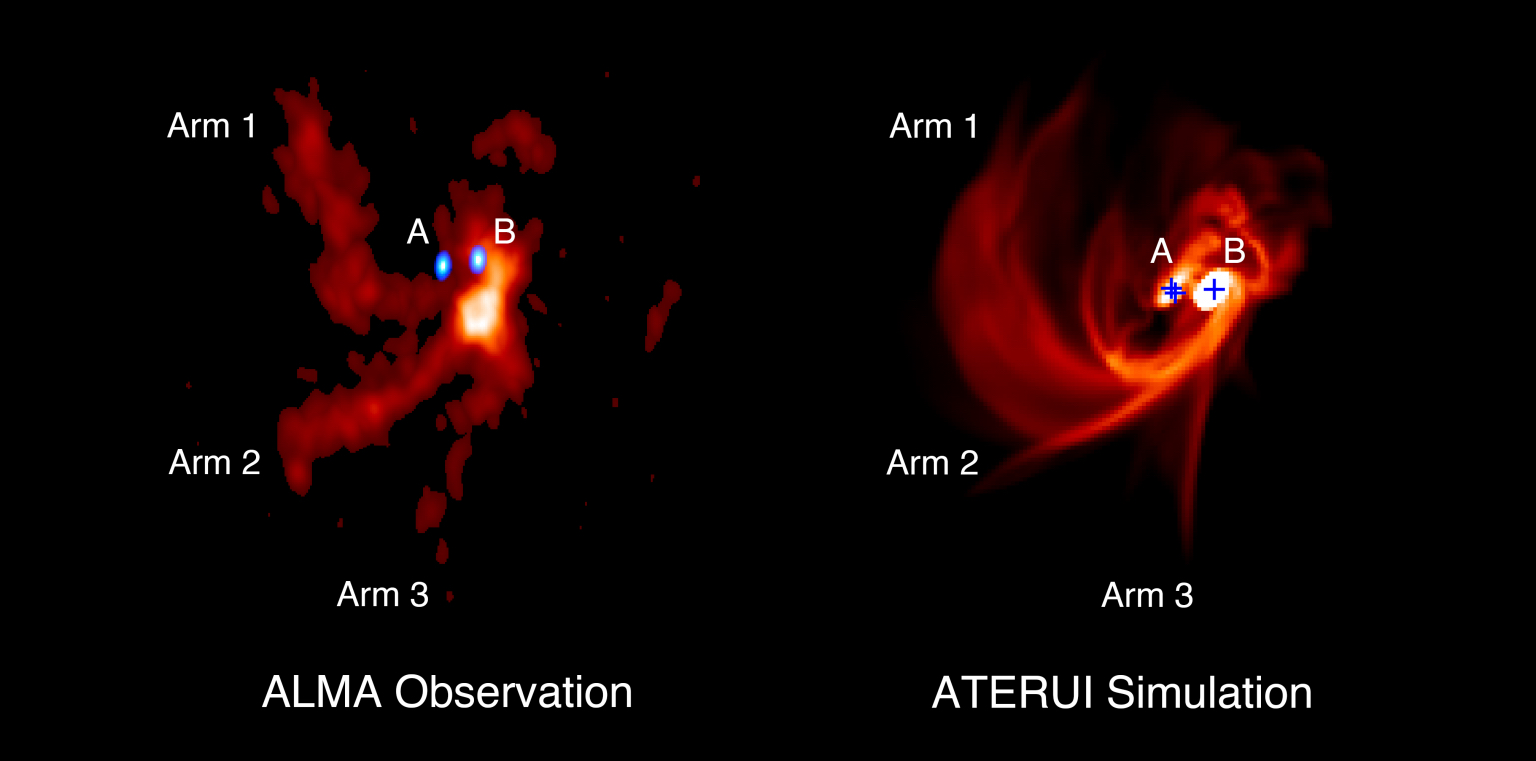An international team of researchers used the ALMA radio telescope complex to observe a young triple star system. They could identify the structures that feed the newborn stars.
Features of the formation of multiple stars
The stars don’t always shine alone. More than half of them have companions. How exactly systems consisting of several stars arise is still a mystery. To date, several possible scenarios of their formation have been proposed, but astronomers have not yet come to a consensus on which of them is closer to the truth.

In addition, scientists investigating newborn multiple systems have discovered something intriguing. They saw gas structures, which they called streamers. These are space “pipelines” that carry vital materials directly to the protostars. Watching the streamers is very important because they show how protostars absorb gas for their growth.
To understand the process of formation of multiple stars and to study streamers, the researchers resorted to the help of ALMA, which has enough power and resolution to consider their structure. The purpose of the observations was the newborn system IRAS 04239+2436, located at a distance of 460 light-years from Earth.
Newborn Triple System
During ALMA’s observations, radio signals of sulfur monoxide (SO) molecules were detected. Like bread crumbs, they led astronomers to discover three colossal spiral arms that deliver matter directly to newborn stars. Their length is 400 au. This is ten times more than the distance between the Sun and Pluto.

The researchers were able to measure the speed of gas movement inside the arms. Next, they compared the data obtained with the simulation results to test different versions of the formation of IRAS 04239+2436. Previously, two main scenarios for the formation of multiple stars were proposed. The first is the scenario of turbulent fragmentation, in which a turbulent gas cloud breaks up into gas condensates, each of which develops into a protostar. The second is a disk fragmentation scenario in which new protostars are born from a gas disk surrounding an already formed protostar.
As a result, the researchers concluded that three protostars IRAS 04239+2436 were born as a result of a hybrid scenario. In it, the star formation process begins with a turbulent cloud of gas, similar to the scenario of turbulent fragmentation. Then the rudiments of new protostars are formed in the disk (as in the disk fragmentation scenario), and the surrounding gas turbulence leads to the expansion and elongation of spiral arms, which then feed the new stars.
Earlier we talked about how ALMA revealed the secrets of the formation of planets.
According to https://www.almaobservatory.org
Follow us on Twitter to get the most interesting space news in time
https://twitter.com/ust_magazine
